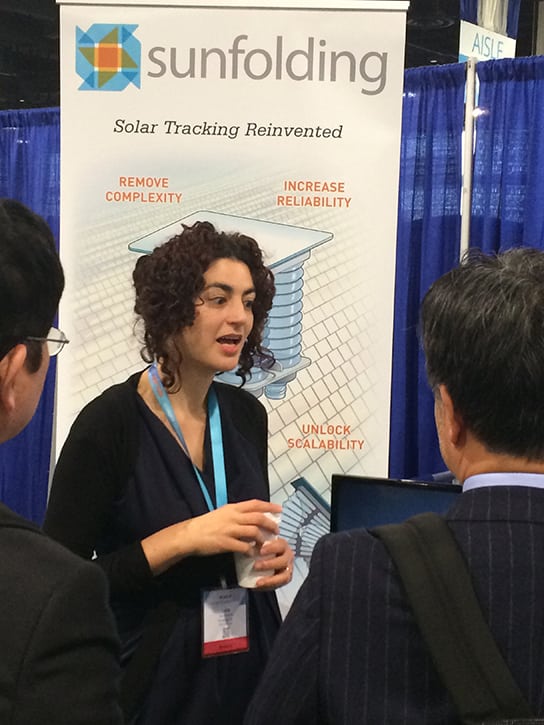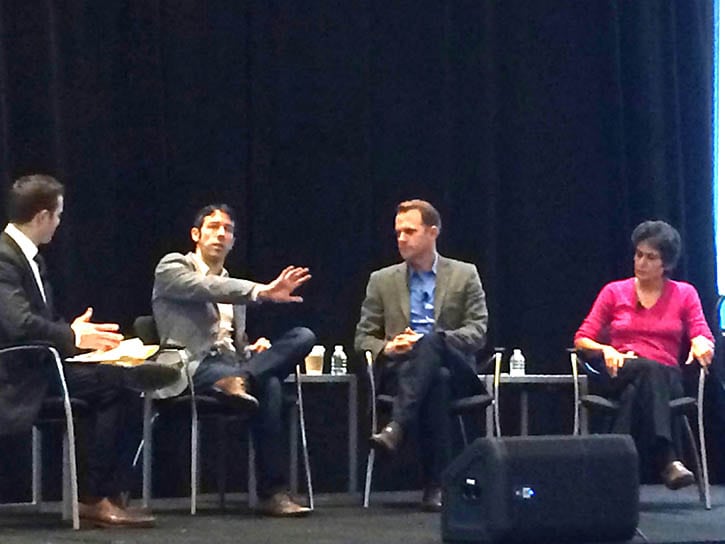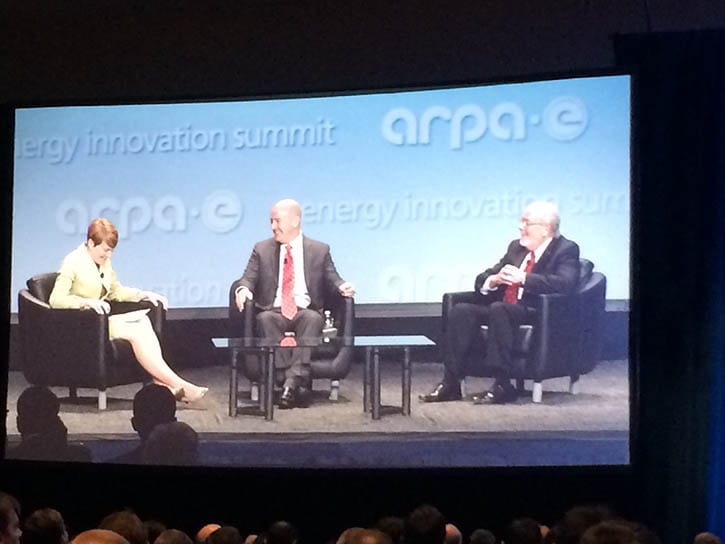ARPA-E Summit Takes the Pulse of Energy Technology Innovation
“The coolest thing on Earth” is, according to its new director, a young federal agency that has a unique focus on pushing technology frontiers and an “unblinking attention” to market realities.
One thing you can say for sure about the energy world, said Dr. Ellen Williams (Figure 1), incoming director of ARPA-E (Advanced Research Projects Agency-Energy) is that it “is always uncertain,” and today’s low oil and gas prices won’t last. Williams, whose previous positions have included serving as the senior advisor to the secretary of energy and as chief scientist for BP, made that remark when interviewed by Phyllis Cuttino, director, Clean Energy Initiative at The Pew Charitable Trusts, at the sixth annual ARPA-E Summit this week.
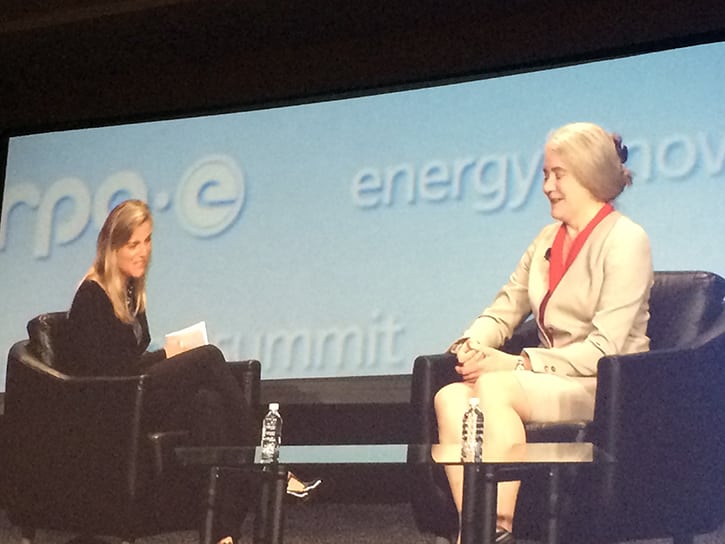 |
1. Dr. Ellen Williams, incoming director of ARPA-E. Source: POWER |
Though Williams otherwise appears to be a calm and collected person, her excitement about the new role at ARPA-E was obvious.
The ARPA-E Summit, held near the nation’s capital, brings together researchers, entrepreneurs, and established industry players to encourage collaboration, networking, and the sharing of best practices for developing successfully disruptive, useful technologies in the energy space. It has again attracted roughly 2,000 attendees. All the players you might expect are attending, as well as a few that might surprise you, including a representative of the French Embassy, whose primary job is as a researcher for a French nuclear firm, and a Menlo Park, Calif.–based BMW representative scouting for technologies that could lower the company’s greenhouse gas emissions at any point along the production chain, from manufacturing plant to vehicle on the road.
The Value of Basic Research
Among the high-profile speakers and panelists at the event was Janet Napolitano, currently president of the University of California system, whose previous leadership roles include serving as Arizona governor and Department of Homeland Security secretary.
Napolitano noted that the U.S. has “outsourced” a lot of basic research to its universities. (That is one reason that many ARPA-E project awardees and partners are affiliated with research universities.) Additionally, she pointed out, the energy industry doesn’t spend as much money on research as the pharmaceutical industry, for example. Later, she noted, “It’s not an innovation-centered industry”; there are a lot of reasons for that, she added.
Nevertheless, there’s no national energy investment system, and that puts universities in a particularly precarious position when funding for their basic research is threatened by budget cuts or the two- and four-year congressional cycles. “Basic research doesn’t go on annual funding cycles,” she noted, and it does have to accept “a high degree of failure.” What’s needed, she suggested, is conveying to Congress and the public that public investment in long-term research is important.
From Research to Development
Effecting change in the energy industry “is harder than some other industries,” observed Leila Madrone, founder and CEO of Sunfolding (Figure 2). In a Monday morning panel discussion, the engineer and executive talked about pivots made in her latest company, which has developed a system-level tracker-based solar technology. Solar technology needs to work for 30 years, but a new technology like hers may have only a year’s worth of data. That can make it difficult for initial customers to buy in.
Problems can develop at any stage of bringing a new technology to market. Sometimes those problems don’t show up until a company tries to scale up manufacturing. Dr. Cheryl Martin, ARPA-E’s previous director and currently deputy director for commercialization, asked the panel “What happens when there’s no more hope?” Dr. Doug Kirkpatrick, co-founder and CEO of BlackPak Inc., answered, “You make the decision quickly.” Our scarcest resource is smart people, he said, so when you can’t win, you start another game. Luckily, people working on projects involved with disruptive technologies like those funded by ARPA-E are not at a loss for jobs, so they aren’t worried about losing a job, he said.
In closing comments, Madrone advised, “Keep listening and keep learning.” Listen to data, industry, and colleagues. Walker echoed Kirkpatrick in saying that you need to be passionate about your project but dispassionate about the data. Kirkpatrick advised, “be honest”—with yourself, the company, and shareholders. The worst thing, he said, is to lie to yourself or a colleague.
Markets, Markets, Markets
One of ARPA-E’s touchstones is to ask of potential projects, “If it works, will it matter?” The answer to that question often depends upon markets. What is the market ready for? What can the market accept in terms of new entrants or costs? Such questions were a refrain throughout the first two days of discussions.
Several speakers noted that what works in one market may not work in another, whether you’re talking countries or grid systems or states. The value of energy storage, for example, varies from market to market, as Glen Merfeld, platform leader, energy storage technologies at GE Global Research, commented.
Is There Life After ARPA-E Funding?
ARPA-E was established as a new agency within the Department of Energy (DOE) in 2007 in response to bipartisan congressional support for a strategic way to strengthen U.S. competitiveness in science and technology. The agency, modeled on the Defense Advanced Research Projects Agency (DARPA), is designed to provide very early stage support for potentially game-changing technologies that touch how we generate, store, and use energy. In addition to grant money, awardees get intensive business development coaching, partnership opportunities, and “tough love” monitoring—some projects are not allowed to continue drawing their grant money through the full term.
It’s one thing to land an ARPA-E grant for an early-stage project, but there’s still usually a sizeable gap between the end of an ARPA-E grant—with an average team award of $2 million to $3 million over “several” years—and commercial adoption. The strategic partnerships ARPA-E facilitates with private companies, research labs, and other government agencies can help make connections for follow-on funding. The annual Summit is also designed to help awardees network with potential funding sources.
But eventually, startups need to find paying customers. To reach that point, Dr. Avideh Zakhor, a professor at the University of California, Berkeley and a serial entrepreneur, advised doing pilots with multiple companies to avoid designing for just one customer. Show that you can validate your idea with multiple customers, she recommended.
As for how you target a first customer, Dr. Cody Friesen—Fulton Engineering Professor of Innovation at Arizona State University, entrepreneur, founder of Fluidic Energy, and ARPA-E grant recipient—said new companies should find a pain point big enough to make the solution pay. Sometimes that means getting pilot funding in another country. That’s the route he took with his latest enterprise, a water technology venture, which is proving a stronger fit in the developing world.
Brian Janous, director of energy strategy for Microsoft, told the audience they need to find the “right” market—the one where the economics will work and where the technology will scale faster.
Zakhor, Friesen, and Janous spoke on a panel titled “Finding Funding Beyond ARPA-E” (Figure 3). Zakhor emphasized the importance of preproduction conversations with potential customers about what they want and what they’d be willing to pay for it. The entire panel was very clear-eyed about market realities. Janous pointed out that market dynamics in the energy space vary by regulatory environment, for example, by system operator—say from PJM to MISO to CAISO—especially where batteries are concerned.
Though the ARPA-E program is still very new, Dr. Martin said in opening remarks that 34 agency projects have raised more than $850 million in private sector follow-on funding. The agency’s website notes that this is after ARPA-E’s investment of approximately $135 million.
Utilities and Technology Innovation
So where do today’s utilities and other generation providers fit into the technology innovation picture? It depends on whether they have decided to be part of the future or to resist it, according to one of the most lively panel discussions, which paired CPS Energy CEO Doyle Beneby and SunEdison President and CEO Ahmad Chatila.
Asked by the moderator, Wall Street Journal Energy Reporter Amy Harder, if the traditional utility is dying, Beneby (Figure 4) answered, “I think it is dying. That’s a given” because of technology and regulations and customer awareness and choice.
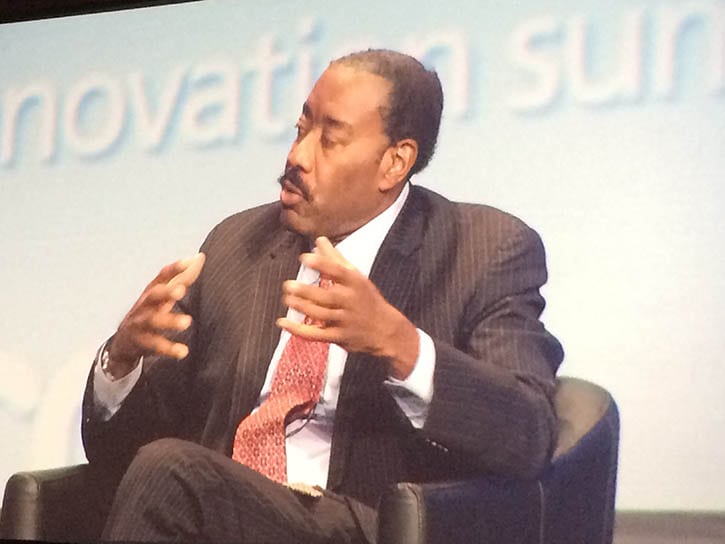 |
4. CPS Energy CEO Doyle Beneby. Source: POWER |
Chatila, whose company is sometimes seen as a challenger to traditional utilities, didn’t appear to disagree with Doyle on many of the issues raised. Utilities “see the change coming,” he said, but their barriers are shareholders who don’t want to take on the risk of a change in the business model.
The trends toward cleaner generation and distributed resources are clear, these two CEOs agreed. Some utilities, like CPS, which is a municipal utility rather than an investor-owned one, are partnering with firms that are involved in renewable generation and energy storage. CPS is working to pair battery storage with solar farms on the wholesale side and partnering “with a lot of technology companies” on the distribution side because “energy is going to become an analog to the Internet,” Beneby said, where you’ll have a mix of generation points and a common architecture rather than a central station. Even though “that’s 10, 15 years out,” you can see the decentralized model evolving, he said. As that transition happens, there will be “some unholy bedfellows.”
It’s not just utilities that are being challenged by the innovation happening around them. Another panel, this one featuring PARC Vice President of Public Sector Operations Rob McHenry and Cummins Inc. Vice President and Chief Technical Officer Dr. John Wall (Figure 5), also pointed to the pace of innovation, which is speeding up, according to McHenry. Innovation, they agreed, is hard work—basically, it’s problem-solving. Yet, the imperative, said Wall, is “Innovate or die.”
More Support for Energy Industry Innovation Announced
In a Tuesday afternoon session, Brian Deese, incoming advisor to the president on climate policy and former deputy director of the Office of Management and Budget, noted that the White House was that day announcing a Clean Energy Investment Initiative for early-stage investment with philanthropic partners. The goal, according to the press release, is “to catalyze $2 billion of expanded private sector investment in solutions to climate change, including innovative technologies with breakthrough potential to reduce carbon pollution.”
Though a number of “mission-driven” investors including foundations, university endowments, and institutional investors have “committed to investing in clean energy innovation and solutions to climate change, in pursuit of both financial returns and mission-aligned impact,” this new DOE initiative is to aid that effort by identifying “opportunities to leverage its world-class technical expertise, technologies, and programs to assist in understanding opportunities and needs that drive clean energy innovation.”
The new initiative does not, Deese said, use appropriated funds but instead encourages more investment in energy innovation.
—Gail Reitenbach, PhD, editor (@GailReit, @POWERmagazine)
